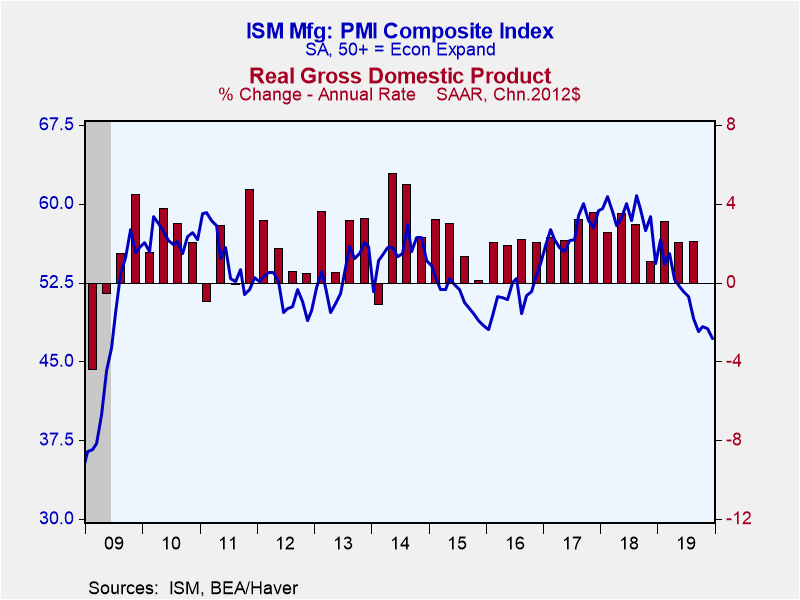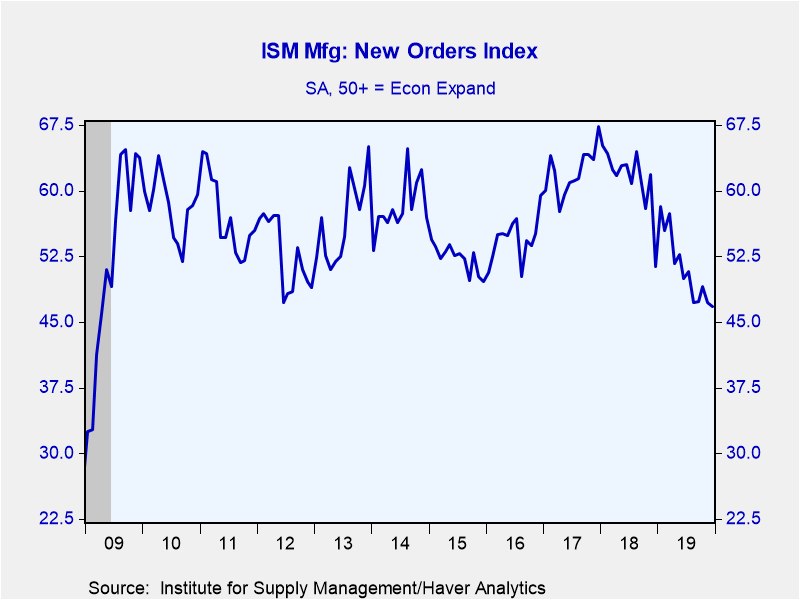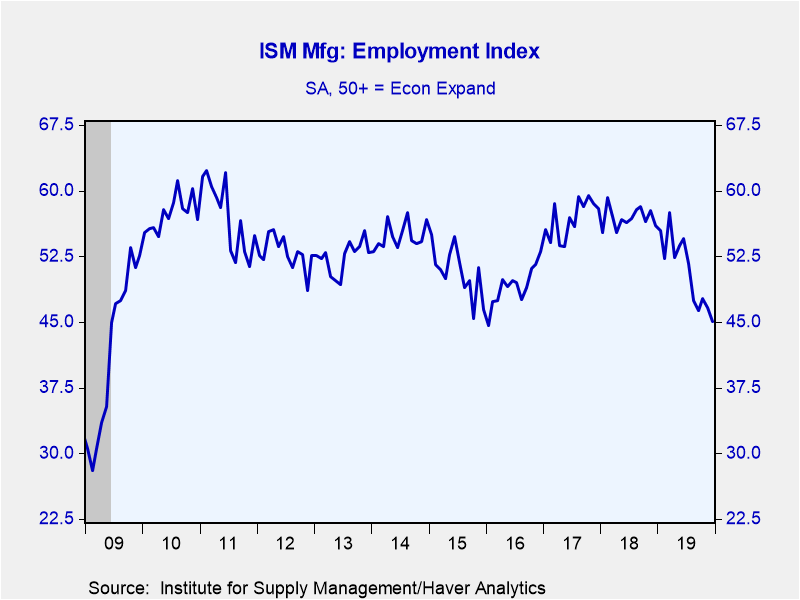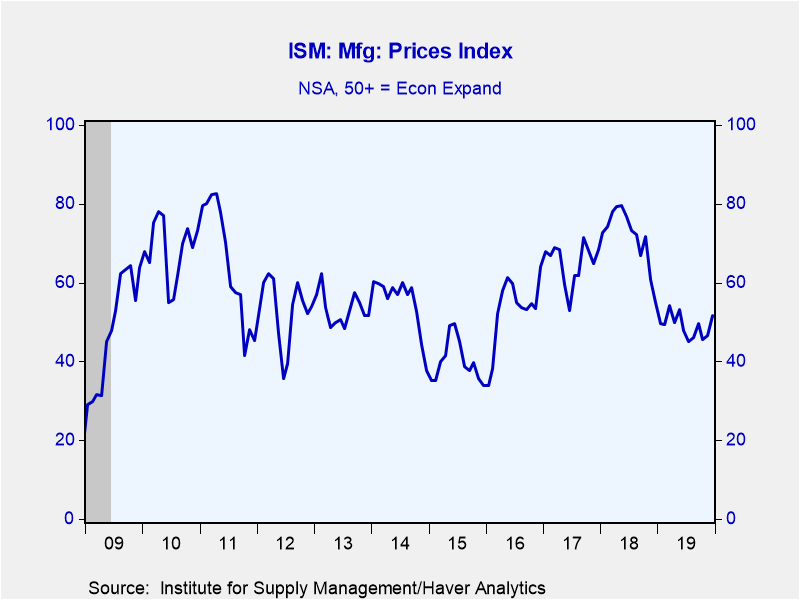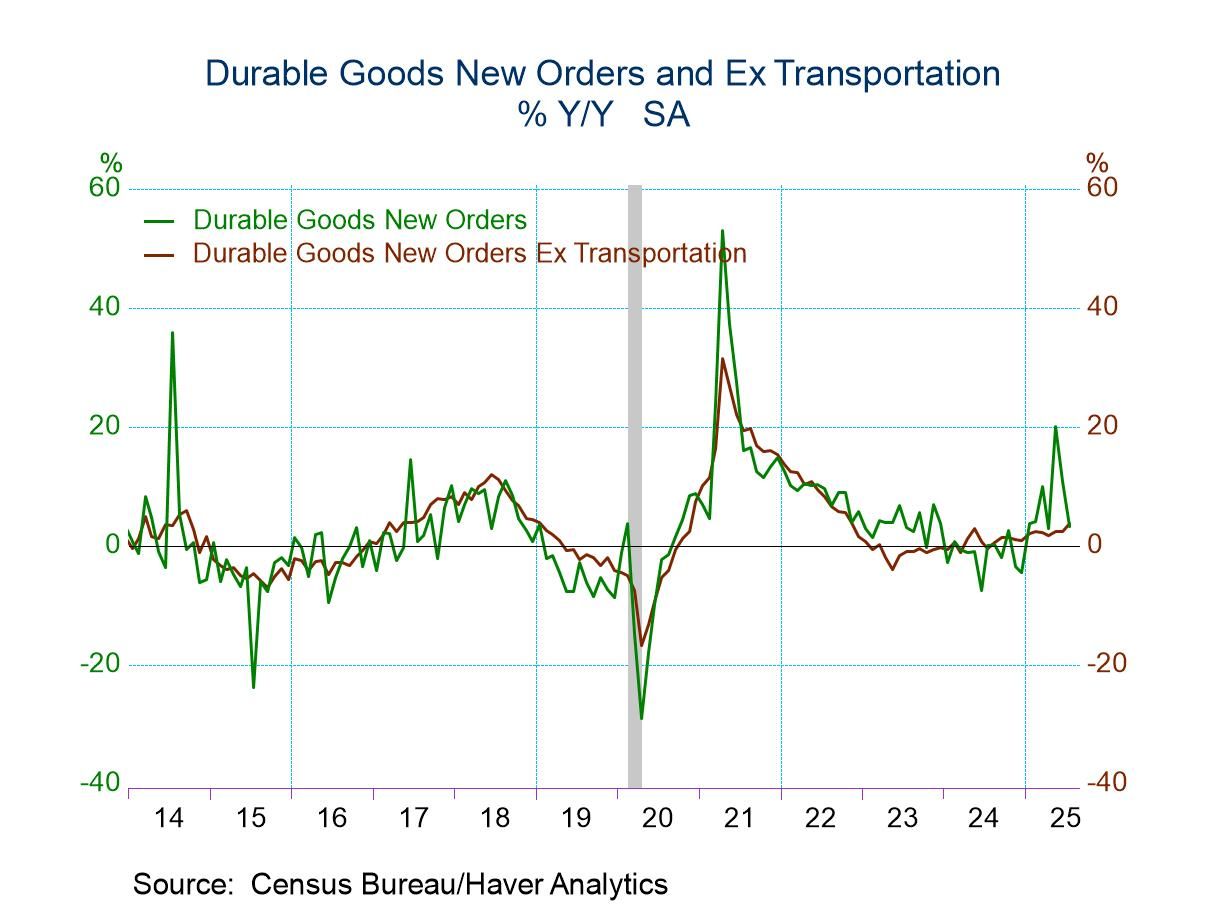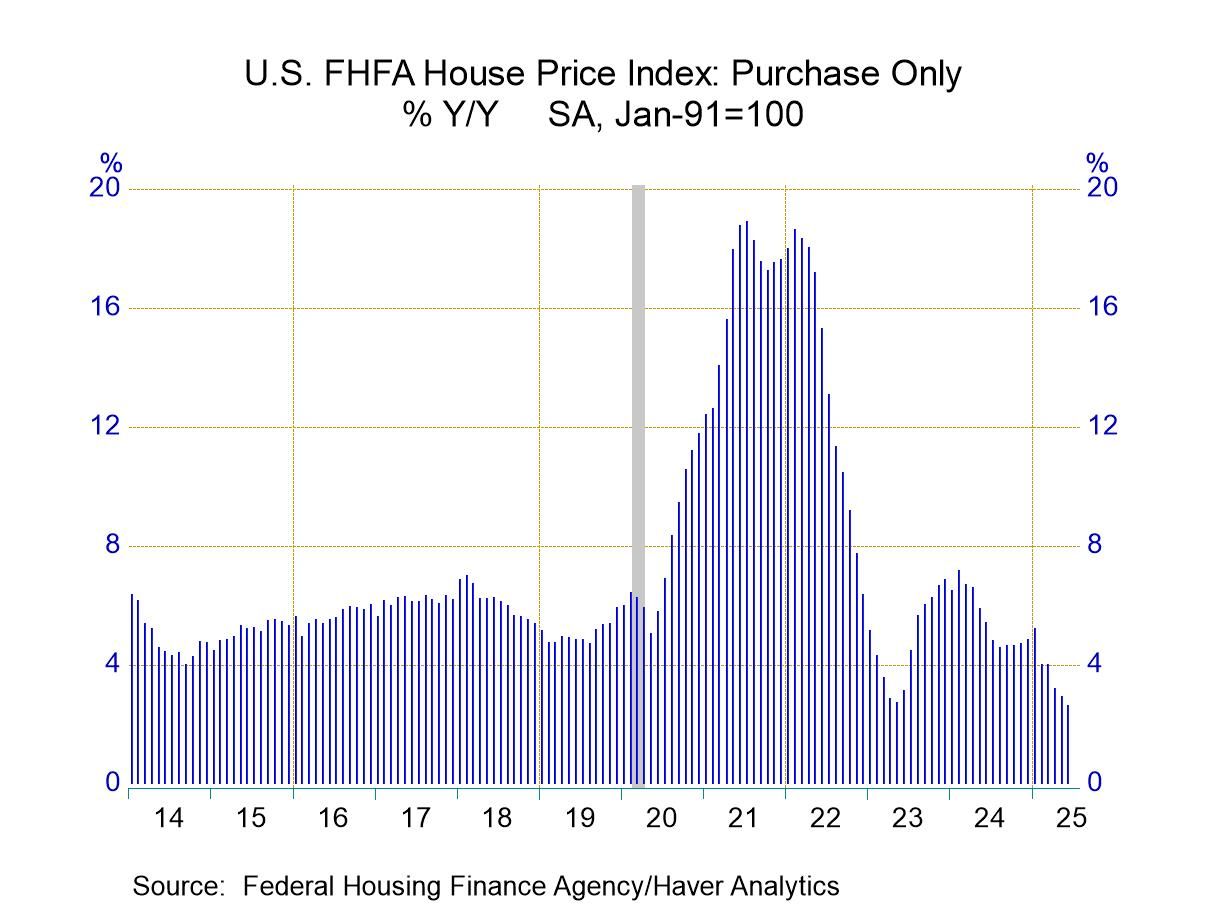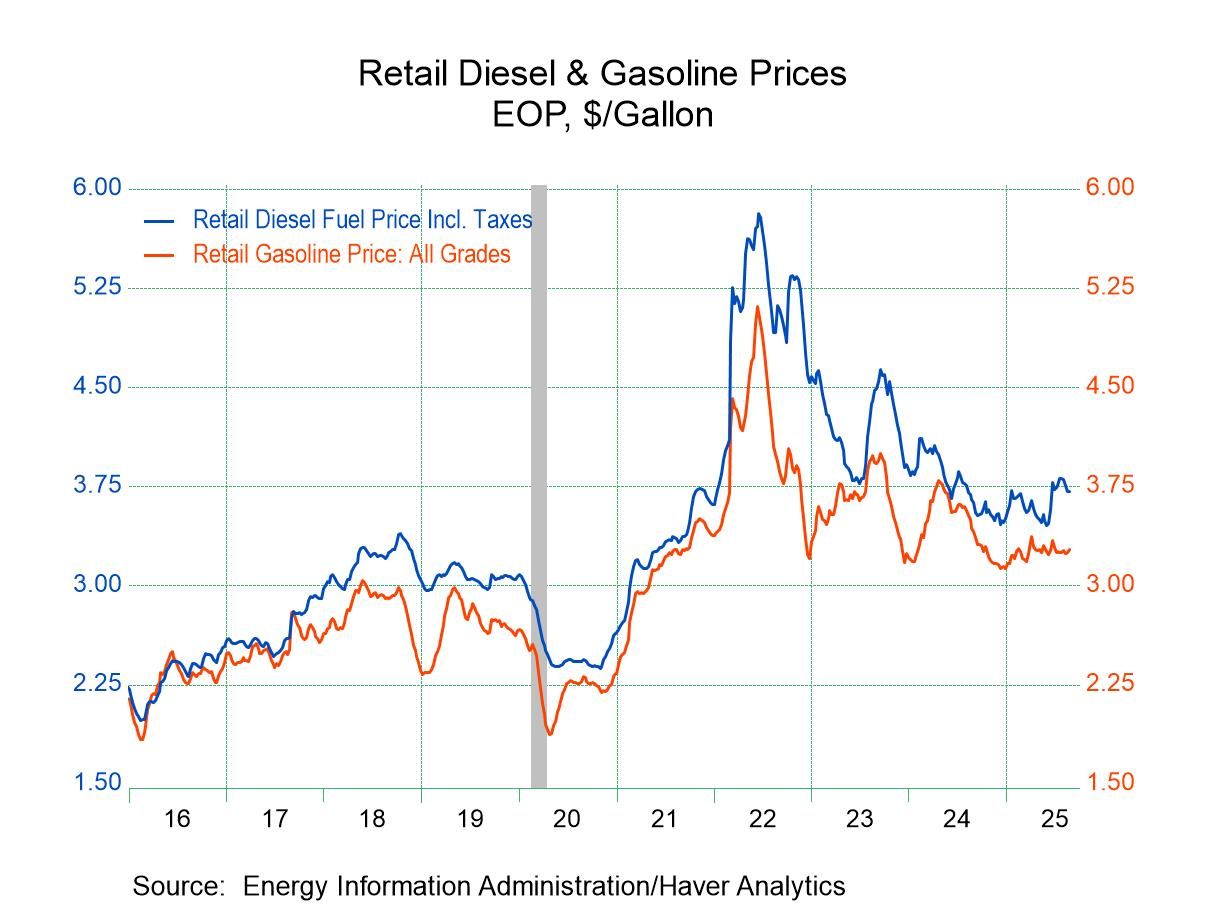 Global| Jan 03 2020
Global| Jan 03 2020ISM Manufacturing Composite Index Weakens Again But Pricing Improves
by:Tom Moeller
|in:Economy in Brief
Summary
Activity in the factory remains constrained. The ISM Manufacturing Diffusion Index for December fell to 47.2 after easing to 48.1 in November. It was the fifth consecutive reading below 50, indicating a contraction in activity. A [...]
Activity in the factory remains constrained. The ISM Manufacturing Diffusion Index for December fell to 47.2 after easing to 48.1 in November. It was the fifth consecutive reading below 50, indicating a contraction in activity. A reading of 49.0 had been expected in the Action Economics Forecast Survey. For all of 2019, the index level of 51.2 was the lowest level since 2016. During the last 15 years, there has been a 69% correlation between the composite index and the quarterly change in real GDP.
Changes in the component indexes remained mixed last month. Reversing its November improvement, the production series declined to 43.2 last month, its lowest level since April 2009. The new orders index declined to 46.8, also the lowest level since 2009. Offsetting these declines was a rise in the supplier delivery series to 54.6, indicating the slowest product delivery speeds in six months. Despite the gain, the index remained well below the high of 67.6 during June of last year. Also rising slightly was the inventories index to 46.5, but that continued to suggest nearly the quickest rate of inventory decumulation in over three years.
The employment index fell to 45.1, the lowest level since January 2016. It was the fifth consecutive reading indicating a decline in factory sector payrolls. A greatly lessened twelve percent (NSA) of survey respondents reported more hiring while an increased 25% (NSA) reported a decline. During the last 15 years, there has been a 79% correlation between the index level and the m/m change in factory sector payrolls.
The prices paid index increased to 51.7. It was the first time since May that the figure was above the break-even level of 50. Seventeen percent (NSA) of survey respondents indicated higher prices while a lessened 13% reported price declines.
Amongst other series reported by the ISM, the export order index eased to 47.3 and remained below the 62.8 high in February 2018. The import index rose slightly as did the unfilled order series, but order backlogs remained near the four-year low.
The ISM figures are diffusion indexes where a reading above 50 indicates expansion. The figures from the Institute for Supply Management can be found in Haver's USECON database; further detail is found in the SURVEYS database. The expectations number is available in Haver's AS1REPNA database.
The minutes to the latest FOMC meeting can be found here.
| ISM Mfg (SA) | Dec | Nov | Oct | Dec'18 | 2019 | 2018 | 2017 |
|---|---|---|---|---|---|---|---|
| Headline Index | 47.2 | 48.1 | 48.3 | 54.3 | 51.2 | 58.8 | 57.4 |
| New Orders | 46.8 | 47.2 | 49.1 | 51.3 | 51.2 | 61.4 | 62.2 |
| Production | 43.2 | 49.1 | 46.2 | 54.1 | 51.2 | 60.7 | 60.9 |
| Employment | 45.1 | 46.6 | 47.7 | 56.0 | 50.9 | 56.9 | 56.8 |
| Supplier Deliveries | 54.6 | 52.0 | 49.5 | 59.0 | 52.9 | 62.0 | 56.8 |
| Inventories | 46.5 | 45.5 | 48.9 | 51.2 | 49.8 | 52.9 | 50.4 |
| Prices Paid Index (NSA) | 51.7 | 46.7 | 45.5 | 54.9 | 49.1 | 71.7 | 65.0 |
Tom Moeller
AuthorMore in Author Profile »Prior to joining Haver Analytics in 2000, Mr. Moeller worked as the Economist at Chancellor Capital Management from 1985 to 1999. There, he developed comprehensive economic forecasts and interpreted economic data for equity and fixed income portfolio managers. Also at Chancellor, Mr. Moeller worked as an equity analyst and was responsible for researching and rating companies in the economically sensitive automobile and housing industries for investment in Chancellor’s equity portfolio. Prior to joining Chancellor, Mr. Moeller was an Economist at Citibank from 1979 to 1984. He also analyzed pricing behavior in the metals industry for the Council on Wage and Price Stability in Washington, D.C. In 1999, Mr. Moeller received the award for most accurate forecast from the Forecasters' Club of New York. From 1990 to 1992 he was President of the New York Association for Business Economists. Mr. Moeller earned an M.B.A. in Finance from Fordham University, where he graduated in 1987. He holds a Bachelor of Arts in Economics from George Washington University.


